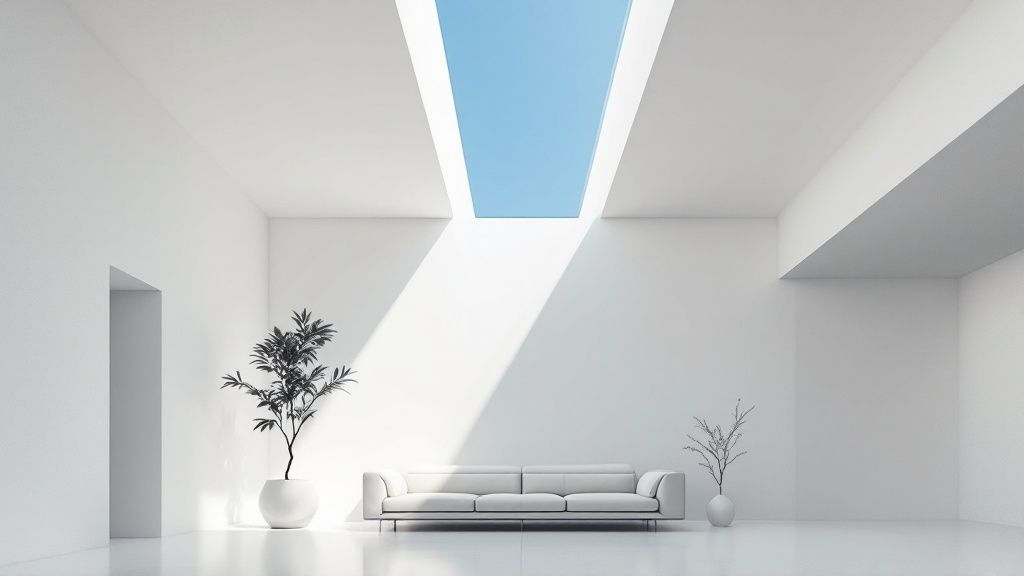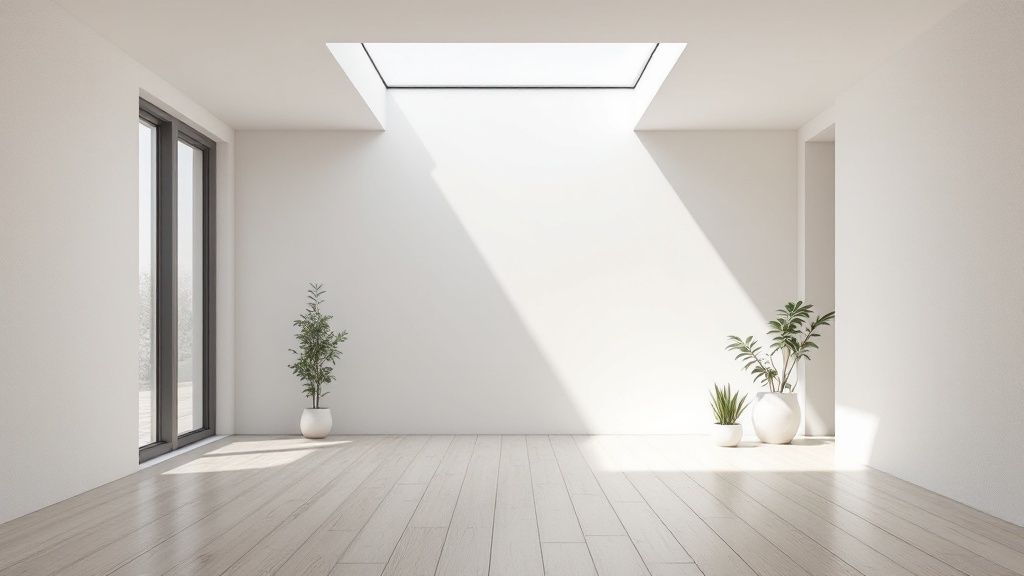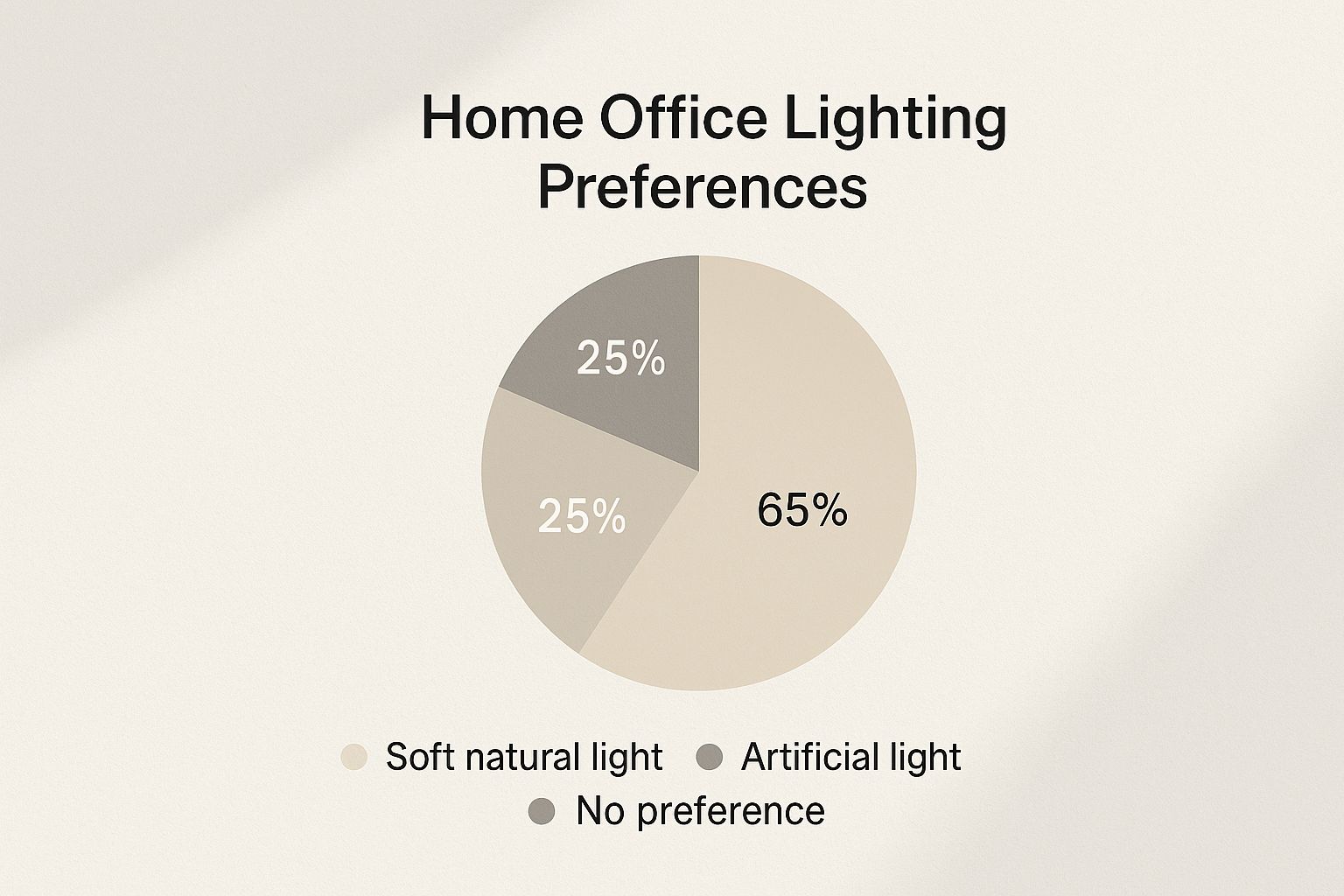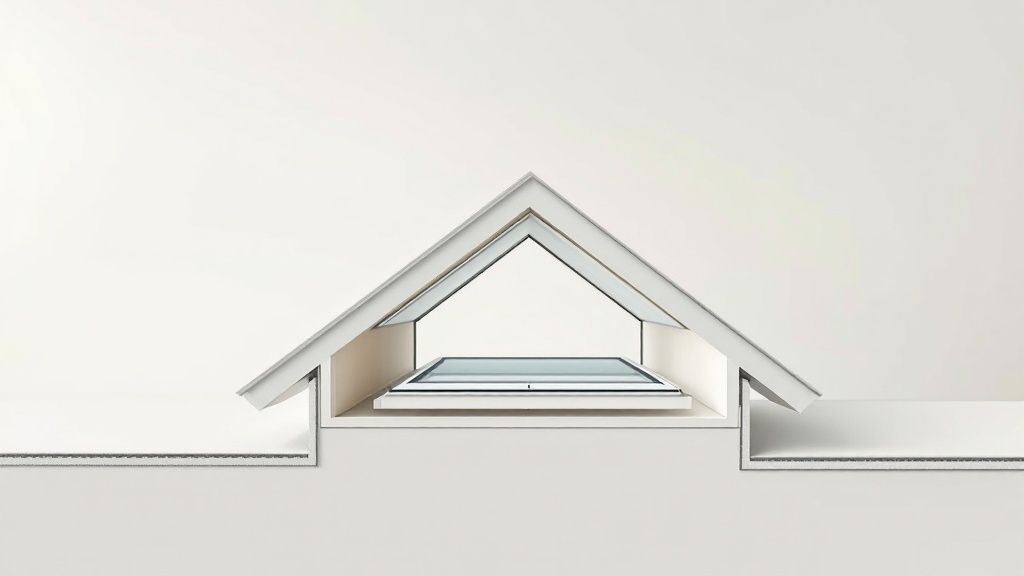
The Narrow Skylight Revolution: Breaking The Mold

Narrow skylights are rapidly gaining popularity among Australian architects and homeowners. These stylish architectural elements offer a fresh perspective on natural lighting, delivering focused illumination without dominating the ceiling. This shift towards narrow skylights represents a departure from traditional, larger skylights, providing a more elegant and versatile solution. But what’s behind this growing trend?
Precision Lighting: A Design Game-Changer
A major benefit of narrow skylights is their ability to provide light precisely where it’s needed. Imagine a long, dimly lit hallway. A single large skylight might struggle to effectively illuminate the entire space. However, a series of carefully positioned narrow skylights can create a welcoming, bright atmosphere from one end to the other.
This precision is especially valuable in Australian urban homes where space is often limited.
Addressing Design Challenges In Australian Homes
Traditional skylights can sometimes present challenges, especially in heritage renovations or rooms with restricted ceiling space. Their size can impact structural integrity or simply feel overwhelming in smaller rooms. Narrow skylights address these concerns with their slim profile, enabling installation in areas where conventional skylights wouldn’t be possible.
This makes them perfect for modernizing older homes in cities like Sydney and Melbourne, maintaining the building’s character while introducing modern comforts. The increasing focus on sustainable building in Australia also contributes to the popularity of narrow skylights. They maximize natural light, minimizing the need for electric lighting.
In Australia, narrow skylights are increasingly common in both residential and commercial architecture. This is driven by a growing demand for natural daylighting solutions to reduce energy consumption from electric lighting. While specific Australian data on narrow skylights is limited, the broader skylight market shows significant growth. Globally, the skylight market was valued at over USD 3.08 billion in 2022. It’s projected to reach USD 4.44 billion by 2028, growing at a CAGR of 6.3%. Australia, within the Asia-Pacific region, contributes significantly due to increasing urbanization and sustainable building regulations. More detailed statistics can be found here: https://www.arizton.com/market-reports/global-skylight-market. This growth reflects a broader movement towards energy-efficient building practices.
From Functional To Feature: The Evolution Of Narrow Skylights
Narrow skylights have moved beyond their purely practical purpose. They are now used as design elements, adding a touch of contemporary style to Australian homes. This is clear in the increasing range of available designs, from minimalist frameless models to sleek, automated systems.
These options allow homeowners to personalize their skylights to suit their individual taste and the architectural style of their homes. This evolution has transformed narrow skylights into statement pieces, enhancing both the aesthetic and functional qualities of Australian homes.
Harnessing Australian Sunshine: The Energy Advantage
Australia is blessed with an abundance of sunshine, and narrow skylights are perfectly positioned to capture this natural light. This translates to a significant energy advantage for homeowners across the country. Strategically placed narrow skylights can dramatically reduce your reliance on electric lighting, leading to lower energy bills and a smaller carbon footprint.
Maximising Light, Minimising Heat
The secret to effectively harnessing the sun’s energy lies in optimising skylight placement and glazing. For instance, in tropical Queensland, a north-facing narrow skylight can capture ample daylight, but careful consideration must be given to glazing that minimises heat transfer. You might be interested in: How to master skylight energy efficiency. Conversely, in temperate Victoria, a south-facing orientation might be preferable to maximize diffuse light throughout the day.
Understanding your local climate and the specific characteristics of your home is crucial for achieving optimal energy performance.

The image above shows how a narrow skylight can bathe a room in natural light, creating a pleasant and productive working environment while minimising the need for artificial lighting. This can lead to substantial energy savings over time, especially in frequently used spaces.
Real-World Energy Savings Across Australia
Many Australian homeowners have reported significant reductions in their electricity bills after installing narrow skylights. These real-world examples demonstrate the tangible energy-saving potential of these daylighting solutions. Daylighting solutions, including narrow skylights, can reduce building energy consumption by up to 15-20%, particularly for lighting.
Buildings with skylights, especially narrow variants, also experience improved occupant comfort and productivity due to enhanced natural lighting. Find more detailed statistics here: The Skylight Market Report This underscores the importance of considering narrow skylights not just for their aesthetic appeal, but for their practical benefits too.
The following table provides a comparison of the potential energy savings offered by different skylight types across various Australian climate zones. It highlights the importance of selecting the right skylight for your specific location.
Energy Savings by Skylight Type in Australian Climates
A comparison of energy efficiency benefits across different skylight designs in various Australian climate zones
| Skylight Type | Tropical North | Temperate East Coast | Cool Southern Regions | Arid Central Australia |
|---|---|---|---|---|
| Fixed Narrow Skylight | High | Moderate | Moderate | High |
| Ventilated Narrow Skylight | High | High | Moderate | High |
| Tubular Skylight | Moderate | Moderate | Low | Low |
As shown in the table, narrow skylights, both fixed and ventilated, generally offer the greatest potential for energy savings in most Australian climates. However, the specific level of savings will depend on factors such as skylight placement, glazing type, and building design.
Meeting Australian Energy Standards
Australia has increasingly strict energy standards for buildings. Narrow skylights play a vital role in helping homeowners meet these requirements. Their ability to reduce reliance on artificial lighting contributes to improved energy ratings and aligns with broader sustainability goals.
By incorporating narrow skylights into your home, you can contribute to a more sustainable future while enjoying the benefits of a brighter, more inviting living space.
Designing With Light: Materials That Make the Difference
Narrow skylights offer exciting design possibilities, truly elevating a space. From minimalist fixed panels to automated systems, the Australian market offers a stunning array of options. Let’s explore the materials that make these narrow skylights shine.
Glazing: Performance Under the Australian Sun
Australia’s harsh UV conditions require high-performance glazing. Double-glazed glass is a popular choice, reflecting summer heat outwards while retaining warmth during winter. This helps maintain comfortable indoor temperatures and reduces energy consumption. Installing a narrow skylight can significantly improve your home’s energy efficiency. Learn more about boosting your home’s energy efficiency through resources like this article on making your home more energy efficient. Electrochromic smart glass provides dynamic control over light and heat. This technology allows electronic tint adjustment, optimizing natural light while minimizing glare and heat gain.

Framing: Durability and Style
Framing material is crucial for a skylight’s longevity and aesthetics. Aluminum is favored for its durability and sleek, modern appearance. Its corrosion resistance makes it ideal for coastal environments. For heritage renovations, timber frames offer a classic touch, complementing traditional architecture. Choosing timbers treated for Australian conditions ensures resistance to termites and rot.
Integrated Innovations for Australian Conditions
Integrated features enhance narrow skylight performance in Australia. Moisture sensors automatically close the skylight at the first sign of rain, preventing leaks. This is especially valuable in areas with sudden downpours. Automated shading systems, controlled by sensors or remotely, offer precise light and heat control. This optimizes natural light and prevents overheating. Self-cleaning coatings reduce the need for regular cleaning in dusty or hard-to-reach locations.
Choosing the Right Materials for Your Narrow Skylight
Selecting the right materials ensures your narrow skylight performs effectively and enhances your home’s aesthetic appeal. Consider your local climate, architectural style, and budget. Coastal homes benefit from durable aluminum frames, while bushfire-prone areas require fire-resistant materials. Carefully considering these factors creates a stunning and functional addition to your home.
Beyond DIY: Narrow Skylight Installation Mastery

Installing a narrow skylight is a project that requires careful planning and precise execution. This guide offers clear and practical advice on key installation factors specifically for Australian homes. We’ll cover everything from optimal placement to navigating Australian building codes.
Positioning For Performance: Light and Heat Control
Placement is crucial for maximizing the benefits of narrow skylights. A north-facing skylight in Darwin might provide ample sunlight, but it could also overheat the space. Conversely, a south-facing skylight in Hobart could offer consistent, diffused light throughout the day. Understanding your local climate and your home’s unique characteristics is essential.
Roof Types and Waterproofing: Essential Considerations
Australian homes feature a wide variety of roof types, from traditional tiles to modern colorbond metal sheeting. Each roof type presents unique challenges for skylight installation and waterproofing.
For tiled roofs, meticulous flashing installation is critical to prevent leaks. Colorbond metal roofs, on the other hand, require specialized sealant techniques to ensure a watertight seal. Choosing the right materials and techniques for your specific roof type is paramount for long-term performance.
Building Codes and Cyclone Ratings: Australian Standards
Compliance with Australian building codes is mandatory. This includes meeting energy efficiency standards. For homes in cyclone-prone areas of northern Australia, adhering to specific cyclone ratings is also essential.
Always ensure your chosen skylight and the installation method meet all relevant regulations. This will ensure safety and prevent future issues.
Installation Timelines: From Simple To Complex
Installation times can vary significantly. A simple replacement in a standard tiled roof might take one or two days. A complex retrofit in a heritage-listed building, however, could take considerably longer. These more involved projects often require specialized tradespeople and council approvals.
For more detailed installation guidance, check out our comprehensive guide on How to master skylight installation.
DIY vs. Professional Installation: Knowing Your Limits
While some homeowners may be comfortable with a simple skylight replacement, complex installations often require the expertise of a professional. Incorrect installation can lead to various problems, including leaks, structural issues, and voided warranties.
Warning signs that you might need a professional include complex roof structures, unusual angles, or the need for structural modifications. Choosing the right installation approach from the beginning can save you time, money, and potential headaches down the road.
The table below provides a detailed cost breakdown for narrow skylight installation in Australia. It outlines the various cost components and factors that can influence the final price.
Narrow Skylight Installation Cost Breakdown
A detailed breakdown of typical costs associated with narrow skylight installation in Australia.
| Cost Component | Budget Range (AUD) | Percentage of Total Cost | Factors Affecting Cost |
|---|---|---|---|
| Skylight Unit | $500 – $2,000 | 30% – 50% | Size, brand, features (e.g., double glazing, operable) |
| Installation Labor | $500 – $1,500 | 30% – 50% | Complexity of installation, roof type, accessibility |
| Flashing & Sealant | $100 – $300 | 5% – 10% | Roof type, complexity of flashing details |
| Additional Materials (e.g., timber, screws) | $50 – $150 | 5% – 10% | Scope of the project, specific requirements |
| Council Permits (if required) | $0 – $500 | 0% – 10% | Local council regulations, complexity of project |
As you can see, the cost of installing a narrow skylight can vary significantly depending on several factors. It’s important to get multiple quotes from reputable installers to ensure you’re getting the best possible price. Understanding these costs beforehand will help you budget effectively for your project.
Transforming Challenging Spaces With Narrow Skylights
Narrow skylights offer innovative solutions for tricky lighting situations in Australian architecture. This section explores remarkable transformations in various Australian buildings where conventional lighting simply wouldn’t suffice. These slender channels of light are revolutionizing how we approach heritage renovations, especially in Sydney terraces and Melbourne Victorians, where structural alterations are often limited.
Bringing Light to Dark Interiors
Through compelling before-and-after examples, we’ll discover how dim internal bathrooms, windowless kitchens, and confined hallways are converted into bright, airy spaces without compromising privacy or structural integrity.
For instance, a narrow skylight extending the length of a hallway can provide uniform illumination, eliminating the need for numerous light fixtures. This not only enhances the ambiance but also reduces energy consumption. Strategically positioned narrow skylights can also brighten internal bathrooms without sacrificing privacy, offering a superb alternative to artificial light and creating a more natural, inviting atmosphere. Learn more about the benefits of skylights.
Commercial Applications: Boosting Productivity With Natural Light
Beyond residential applications, narrow skylights are proving invaluable in commercial settings. We’ll examine how they foster productive work environments with reduced reliance on artificial lighting, from intimate boutiques to expansive retail spaces.
Imagine a retail store where narrow skylights accentuate product displays, creating an enticing and visually appealing shopping experience. This can dramatically enhance merchandise presentation and create a more welcoming environment for customers. In office settings, narrow skylights can elevate employee morale and productivity by providing access to natural light.
Case Studies: Real-World Examples of Narrow Skylight Transformations
Each case study offers specific details on dimensions, orientation, and installation techniques. This provides practical insight and allows you to consider how to adapt these concepts to your own challenging spaces.
For example, in a heritage-listed building, a narrow skylight could be installed above a staircase to illuminate a previously dark and enclosed area. The case study would detail the specific dimensions of the skylight, its orientation relative to the sun, and the installation methods used to preserve the building’s historical integrity.
Another example might feature a modern home with a narrow skylight integrated into a flat roof to illuminate a living space. This case study would detail the glazing used to manage heat gain and maximize energy efficiency, along with how the skylight seamlessly integrates into the roof design. These real-world examples offer practical inspiration and showcase the versatility of narrow skylights in diverse applications. They provide valuable insights into integrating these elements into various architectural styles, from traditional to contemporary, to overcome lighting challenges and enhance the overall aesthetic appeal of a space.
The Future Is Bright: Smart Narrow Skylight Innovations
The world of narrow skylights is constantly evolving. Australian innovators are leading the charge, developing exciting new technologies that promise to reshape how we experience natural light.
Smart Home Integration: Automating Natural Light
Imagine a narrow skylight that adjusts itself based on the weather, your home’s internal temperature, or even your daily routine. This is the promise of smart home integration. Automated systems can open and close your skylights, optimizing both ventilation and natural light while minimizing energy loss. This increases energy efficiency and adds convenient automation to modern homes. Picture waking up to a naturally lit room as your skylight opens at sunrise.
Advanced Glazing: Performance and Affordability
Advancements in glazing technology are making high-performance narrow skylights more accessible to Australian homeowners. These innovations offer improved thermal performance, blocking excess summer heat and retaining warmth in winter. This is especially valuable in Australia’s varied climates, where energy efficiency is a priority. These glazing options are also becoming more affordable, making them a cost-effective way to improve home comfort and energy savings.
Meeting Australia’s Energy Goals
Australian innovators are developing narrow skylights that align with the nation’s energy targets. These advancements support increasingly strict building codes and broader sustainability objectives. By improving thermal performance and reducing the need for artificial lighting, these skylights help homeowners lower energy bills and minimize their environmental impact. Investing in smart narrow skylights is an investment in both comfort and a sustainable future.
Aesthetic Innovations: Reimagining Skylight Design
Beyond functionality, narrow skylight design is also evolving aesthetically. Frameless designs create a seamless flow between the skylight and ceiling, enhancing the feeling of open space. Curved glass options introduce unique lighting effects, transforming rooms into architectural statements. These designs allow for more creative uses of natural light, improving both form and function. This is especially important in modern Australian architecture, which often emphasizes clean lines and minimalist aesthetics.
Future-Proofing Your Skylight Installation: Practical Advice
When investing in narrow skylights, it’s crucial to identify features that offer lasting value versus passing trends. Some innovations offer significant long-term benefits, while others might quickly become outdated. Consider factors like long-term energy efficiency, maintenance needs, and compatibility with future smart home technology. Choosing a skylight with durable, high-quality glazing is a wise investment. Ensuring compatibility with emerging smart home technologies will also allow you to benefit from future advancements.
Ready to brighten your home with natural light? Explore the range of high-quality, innovative narrow skylights at Vivid Skylights. Let us help you illuminate your space and save on energy costs.
